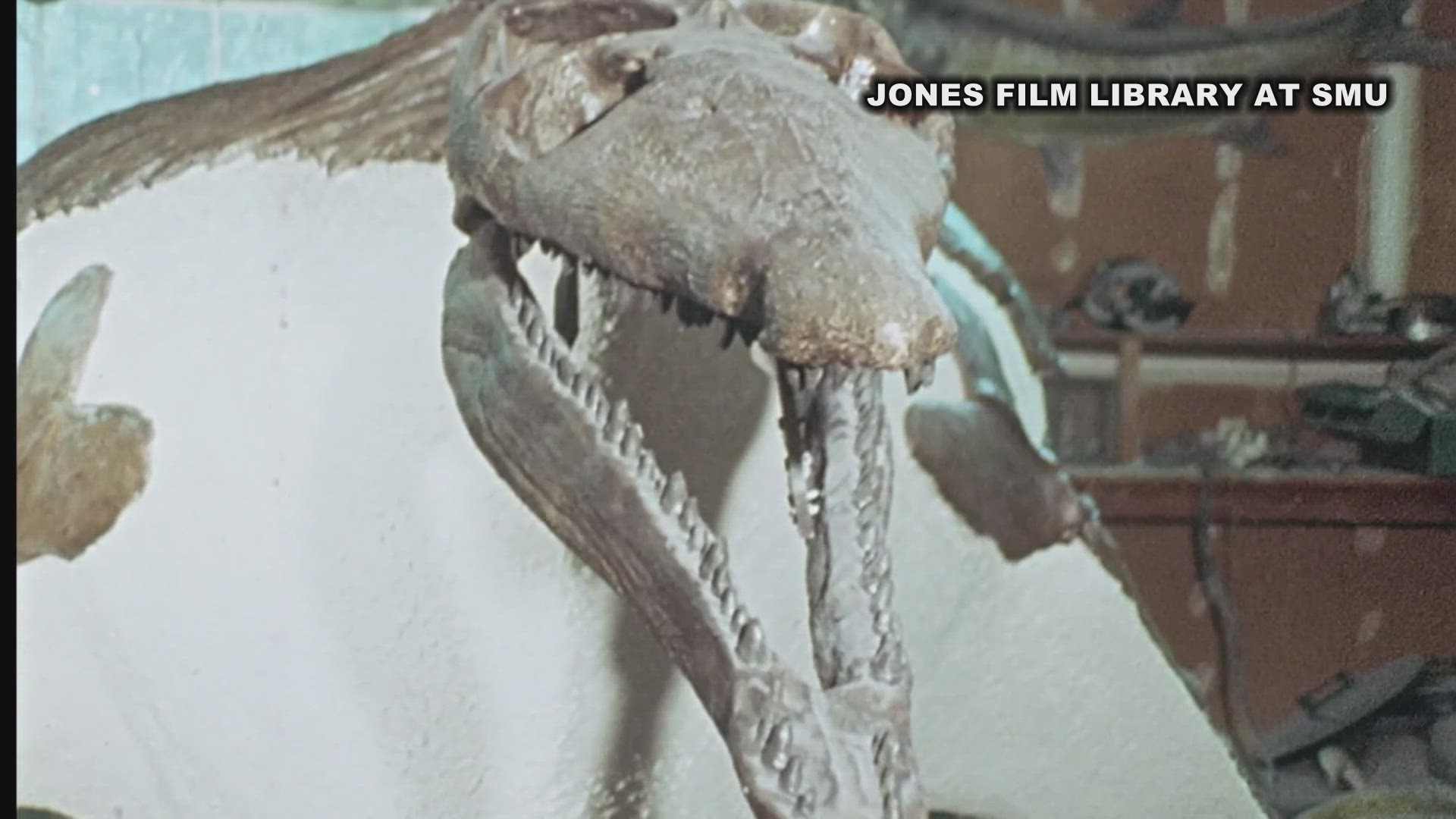DALLAS — Each year, 70 million people fly out of DFW International Airport with their eyes fixated towards the skies but with barely any thought of what lies beneath their feet.
Earth and sediment packed with the remains of creatures from a time before mankind.
“There is a very rich history of fossils near the airport,” said Dale Winkler, the director of SMU’s Shuler Museum of Paleontology.
When the airport was under construction in 1974, a crew digging a drainage ditch unearthed the skeleton of a Plesiosaur, a prehistoric marine animal stretching 30-feet long and lived in a sea once covering DFW and splitting the land now known as the United States.
A WFAA story archived in SMU’s Jones Film Library covered the discovery by interviewing SMU professor Bob Slaughter and the students who helped restore and reconstruct the skeletal remains into a display. Braniff Airlines funded the project and the Plesiosaur was displayed in their terminal at DFW until the airline went out of business. It remained at the airport until 2013 before Winkler and the Shuler Museum took possession and deconstructed it.
“We brought I back so it could be studied and completely restored,” said Winkler.
But new specimens in and around the airport continue to be discovered, Winkler says most of them found by amateur researchers.
Studying the fossils help scientists like Winkler gain a better understanding of the life, terrain and ultimate extinctions during the Cretaceous period of history.
“When you try to understand something about the history of the earth, it really helps to have a good record,” Winkler said. “Every specimen counts. All of it is pieces of the puzzle.”
And with DFW International moving forward with plans for a new Terminal F, Winkler said there are high hopes construction will reveal even more creatures that have waited beneath the surface for 70 million years.

